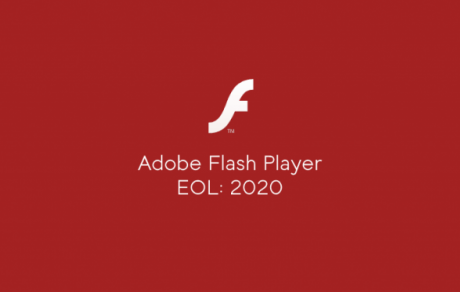Adobe Flash Player ends December 31, 2020

What is Adobe Flash and how will I be impacted by Flash end-of-life?
In 2017, Adobe announced Flash Player would reach "end-of-life" at the end of 2020. On January 1, 2021, Adobe Flash content will no longer function. All major browsers and operating systems will issue updates that will remove Flash compatibility.
Flash has been used on the internet for 25 years to display certain types of video, multimedia, and interactive elements. As web standards have evolved over the years, Adobe Flash has become increasingly obsolete because internet browsers (e.g. Chrome, Firefox, etc.) can natively display rich content that used to be exclusively mediated by a separately-installed Flash plug-in.
How will I be impacted by Flash end-of-life?
Most likely, you are either not directly impacted by this change, or if you are, or you have been notified by websites or services on how this change will impact their content. However, you may still unknowingly be using Flash content if that content is several years old, is video, multimedia, and/or interactive in nature, AND requires Adobe Flash Player to run.
How do I check to see if I am currently using Flash content?
The easiest way to know if content requires Flash is to disable the Flash plug-in and then attempt to load the content. If it still loads, you’re in the clear.
A really quick way to perform this check is to use an iPhone, iPad, or iPod Touch to load the content. Because these iOS devices have never supported Flash, if the content loads, then it does not use Flash.
If you don’t have access to an iOS device, follow these steps:
- Disable Flash in your browser:
- Chrome directions
- Firefox directions
- Internet Explorer directions – These directions explain how to enable Flash; simply disable Flash on step 5.
- Microsoft Edge directions>
- Safari directions – These directions explain how to enable Flash; simply uncheck Flash on step 3.
- Open the content, either by navigating to it in your browser, or by launching the file that you already have downloaded on your computer.
- Note: If you are launching a Flash file from your computer, it will open up in your browser and require the Flash plug-in to work. Most often, these files end in .swf, .flv, or .fla.
- If the content still works, you’re all good! If not, call the IT Service Desk beginning on Monday, January 4, 2021 for assistance.
Converting Flash Content
If you want to convert your content, you have multiple options. Please note that the IT Service Desk can assist you after the winter break!
First you need to save your flash content.
Saving your movie as a .SWF (Shockwave File), Publish as a webpage, or Export to various movie files.
Generally, you will want to save your Flash animation as a .SWF. When you preview your animation in Flash Player by hitting CTRL+ENTER (or Control >Test Movie), Flash automatically creates a .SWF in the same folder as your Flash Document (.FLA).
To export your Flash animation in an HTML webpage, go to File>Publish Settings. Click the HTML tab, customize your settings and click Publish. Flash will save the .HTML file in the same folder as your Flash Document. In the Formats tab of Publish Settings (File>Publish Settings), you can also choose from .GIF, .JPG, .PNG, .EXE, .HQX, and .MOV.
To export your Flash animation in another video format, go to File>Export>Export Movie. Change “Save as type” to your desired format. Flash will export to .SWF, .AVI, .MOV, and more. Depending on the video format, you may have to select video compression settings in a dialog box. Flash will save the exported video in the same folder as the Flash Document.
Second, you should decide what content you want to convert the .SWF file to:
Third, use a site like this to convert the .SWF to this new format: CloudConvert
NOTE: Call the IT Service Desk beginning on Monday, January 4, 2021 for assistance with any or all of these steps!